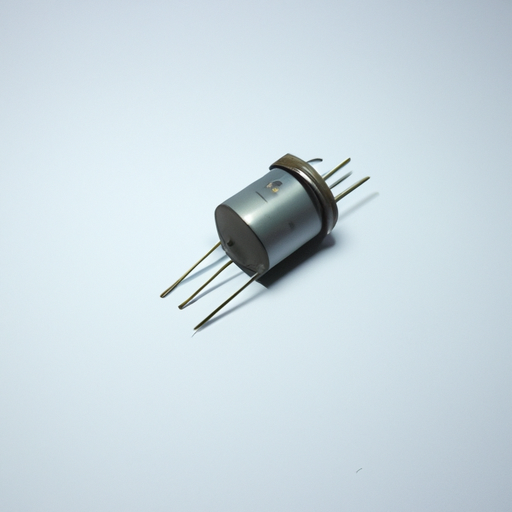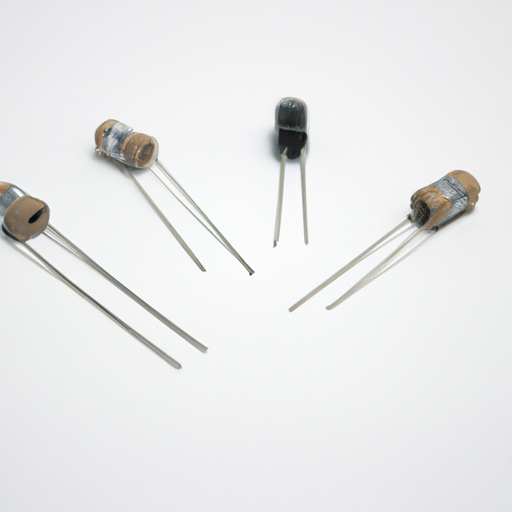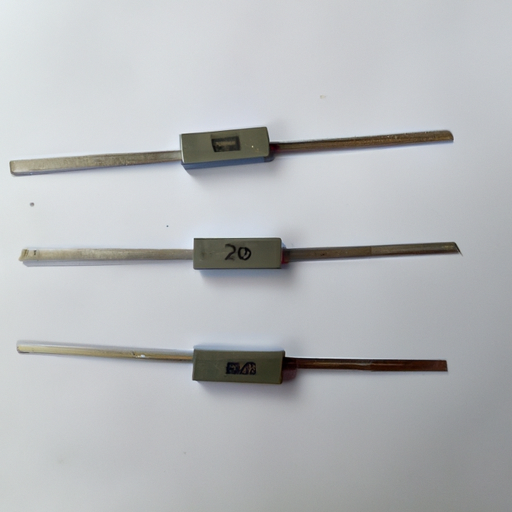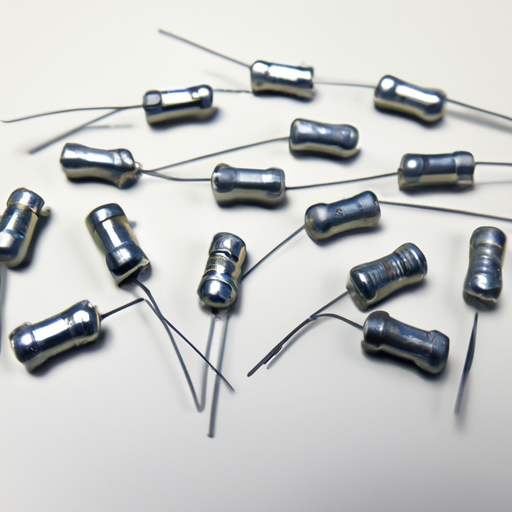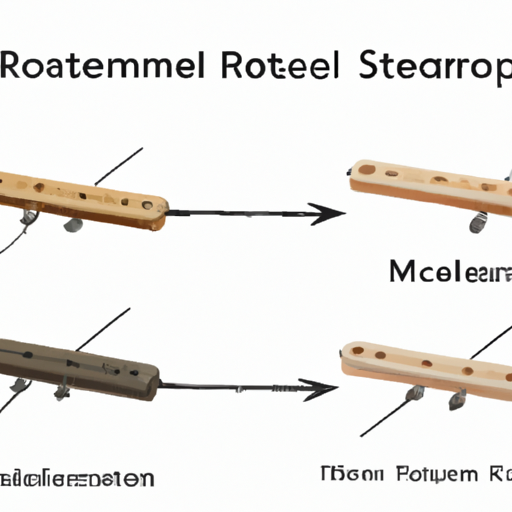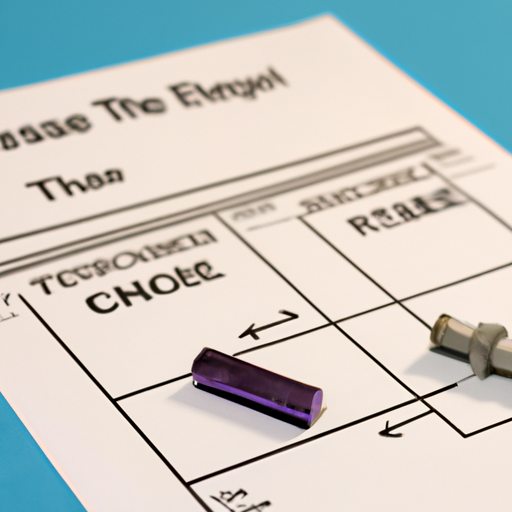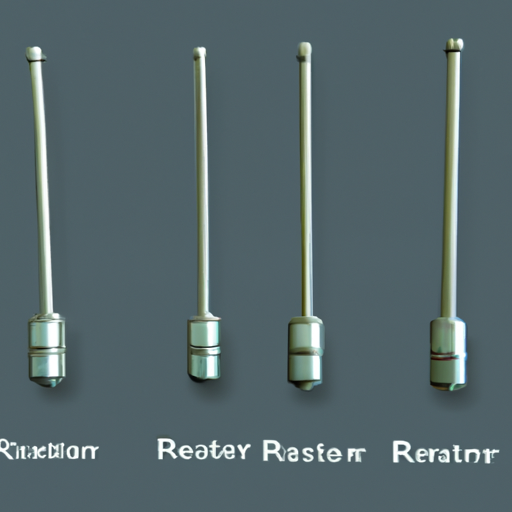What are the Product Features of Power Resistors?
I. Introduction
A. Definition of Power Resistors
Power resistors are electrical components designed to limit current flow, divide voltages, and dissipate energy in the form of heat within electrical circuits. Unlike standard resistors, power resistors are built to handle higher power levels, making them essential in various applications where heat management and reliability are critical.
B. Importance of Power Resistors in Electrical Circuits
In electrical circuits, power resistors play a vital role in ensuring the stability and functionality of devices. They are used in applications ranging from industrial machinery to consumer electronics, where they help manage power distribution, protect sensitive components, and maintain circuit integrity. Their ability to handle significant power loads while maintaining performance makes them indispensable in modern electronics.
C. Overview of the Article
This article will explore the various types of power resistors, their key features, performance characteristics, applications, and selection criteria. By understanding these aspects, engineers and designers can make informed decisions when integrating power resistors into their projects.
II. Types of Power Resistors
A. Wirewound Resistors
1. Construction and Materials
Wirewound resistors are constructed by winding a metal wire, typically made of nickel-chromium or copper-nickel alloy, around a ceramic or fiberglass core. This design allows for high power ratings and excellent thermal stability.
2. Advantages and Disadvantages
**Advantages:** High precision, excellent heat dissipation, and a wide range of resistance values.
**Disadvantages:** Larger size compared to other types and potential inductance issues at high frequencies.
B. Thick Film Resistors
1. Construction and Materials
Thick film resistors are made by applying a resistive paste onto a ceramic substrate. The paste is then fired at high temperatures, creating a durable and stable resistor.
2. Advantages and Disadvantages
**Advantages:** Compact size, low cost, and good performance in high-frequency applications.
**Disadvantages:** Lower power ratings compared to wirewound resistors and less precision.
C. Thin Film Resistors
1. Construction and Materials
Thin film resistors are created by depositing a thin layer of resistive material onto a substrate. This process allows for precise control over resistance values and temperature coefficients.
2. Advantages and Disadvantages
**Advantages:** High accuracy, low noise, and excellent temperature stability.
**Disadvantages:** Higher cost and lower power ratings compared to wirewound resistors.
D. Other Types
1. Ceramic Resistors
Ceramic resistors are known for their high-temperature resistance and durability. They are often used in high-power applications where heat dissipation is crucial.
2. Carbon Composition Resistors
These resistors are made from a mixture of carbon and a binding material. While they are less common in high-power applications, they are valued for their high energy absorption capabilities.
III. Key Features of Power Resistors
A. Power Rating
1. Definition and Importance
The power rating of a resistor indicates the maximum amount of power it can dissipate without overheating. It is a critical specification that determines the resistor's suitability for a given application.
2. How Power Rating Affects Performance
Choosing a resistor with an appropriate power rating ensures reliable operation and longevity. Exceeding the power rating can lead to failure, overheating, and potential damage to surrounding components.
B. Resistance Value
1. Definition and Measurement
Resistance value is the measure of a resistor's opposition to current flow, typically expressed in ohms (Ω). It is a fundamental characteristic that dictates how much current will flow through the resistor at a given voltage.
2. Tolerance Levels
Tolerance indicates the allowable variation in resistance value. Common tolerance levels range from ±1% to ±5%, affecting the precision of the resistor in a circuit.
C. Temperature Coefficient
1. Definition and Significance
The temperature coefficient measures how much a resistor's resistance changes with temperature. It is expressed in parts per million per degree Celsius (ppm/°C).
2. Impact on Performance
A low temperature coefficient is desirable for applications requiring stable performance across varying temperatures, as it minimizes resistance drift.
D. Voltage Rating
1. Definition and Importance
The voltage rating indicates the maximum voltage that can be applied across a resistor without risk of breakdown. It is crucial for ensuring safe operation in high-voltage applications.
2. Relationship with Power Rating
The voltage and power ratings are interrelated; exceeding the voltage rating can lead to excessive power dissipation, resulting in failure.
E. Thermal Management
1. Heat Dissipation Mechanisms
Power resistors generate heat during operation, necessitating effective thermal management. Common methods include heat sinks, forced air cooling, and thermal pads.
2. Importance of Heat Sinks and Cooling
Proper heat dissipation is essential to maintain performance and prevent damage. Heat sinks increase the surface area for heat transfer, while cooling systems help regulate temperature.
F. Size and Form Factor
1. Impact on Design and Application
The size and form factor of a power resistor can influence circuit design and layout. Smaller resistors may be preferred in compact applications, while larger resistors may be necessary for high-power applications.
2. Common Sizes and Configurations
Power resistors come in various sizes and configurations, including axial, radial, and surface mount, allowing for flexibility in design.
IV. Performance Characteristics
A. Stability and Reliability
1. Factors Affecting Stability
Stability is influenced by factors such as temperature, humidity, and mechanical stress. High-quality materials and construction techniques enhance stability.
2. Long-term Performance
Reliable performance over time is crucial for applications where failure can lead to significant consequences. Selecting resistors with proven reliability is essential.
B. Frequency Response
1. Importance in High-Frequency Applications
In high-frequency applications, the frequency response of a resistor can significantly impact circuit performance. Resistors with low inductance are preferred to minimize signal distortion.
2. Impact of Inductance and Capacitance
Inductance and capacitance can introduce unwanted effects in high-frequency circuits, making it essential to choose resistors with appropriate characteristics.
C. Noise Characteristics
1. Definition and Measurement
Noise in resistors refers to the random fluctuations in voltage that can affect circuit performance. It is typically measured in microvolts (µV).
2. Importance in Sensitive Applications
In sensitive applications, such as audio equipment and precision measurement devices, low noise characteristics are critical to maintaining signal integrity.
V. Applications of Power Resistors
A. Industrial Applications
1. Motor Control
Power resistors are used in motor control circuits to manage current and protect against overloads.
2. Power Supply Systems
In power supply systems, they help regulate voltage and current, ensuring stable operation.
B. Consumer Electronics
1. Audio Equipment
In audio devices, power resistors are used to manage signal levels and prevent distortion.
2. Home Appliances
Power resistors are found in various home appliances, providing reliable operation and energy management.
C. Automotive Applications
1. Electric Vehicles
In electric vehicles, power resistors are crucial for managing battery discharge and regenerative braking systems.
2. Control Systems
They are also used in automotive control systems to ensure reliable operation of electronic components.
D. Telecommunications
1. Signal Processing
In telecommunications, power resistors are used in signal processing circuits to manage power levels and ensure signal integrity.
2. Network Equipment
They play a vital role in network equipment, helping to regulate power and protect sensitive components.
VI. Selection Criteria for Power Resistors
A. Application Requirements
1. Power and Voltage Needs
Understanding the specific power and voltage requirements of an application is essential for selecting the right resistor.
2. Environmental Conditions
Consideration of environmental factors, such as temperature and humidity, is crucial for ensuring reliable performance.
B. Cost Considerations
1. Budget Constraints
Cost is often a significant factor in component selection. Balancing performance and budget is essential for project success.
2. Long-term Value
Investing in high-quality resistors can lead to long-term savings by reducing the risk of failure and maintenance costs.
C. Manufacturer Reputation
1. Quality Assurance
Choosing reputable manufacturers ensures that the resistors meet industry standards and specifications.
2. Customer Support
Good customer support can provide valuable assistance in selecting the right components and addressing any issues that arise.
VII. Conclusion
A. Recap of Key Features
Power resistors are critical components in electrical circuits, offering various types, key features, and performance characteristics that cater to diverse applications.
B. Importance of Choosing the Right Power Resistor
Selecting the appropriate power resistor is essential for ensuring reliable performance, stability, and longevity in electronic devices.
C. Future Trends in Power Resistor Technology
As technology advances, we can expect innovations in power resistor design, materials, and manufacturing processes, leading to improved performance and efficiency in future applications.
VIII. References
A. Academic Journals
- IEEE Transactions on Power Electronics
- Journal of Electronic Materials
B. Industry Publications
- Electronic Design Magazine
- Power Electronics Technology
C. Manufacturer Specifications
- Vishay Intertechnology
- Ohmite Manufacturing Company
This comprehensive overview of power resistors highlights their significance in modern electronics, providing insights into their features, applications, and selection criteria. Understanding these elements is crucial for engineers and designers aiming to optimize their designs for performance and reliability.

